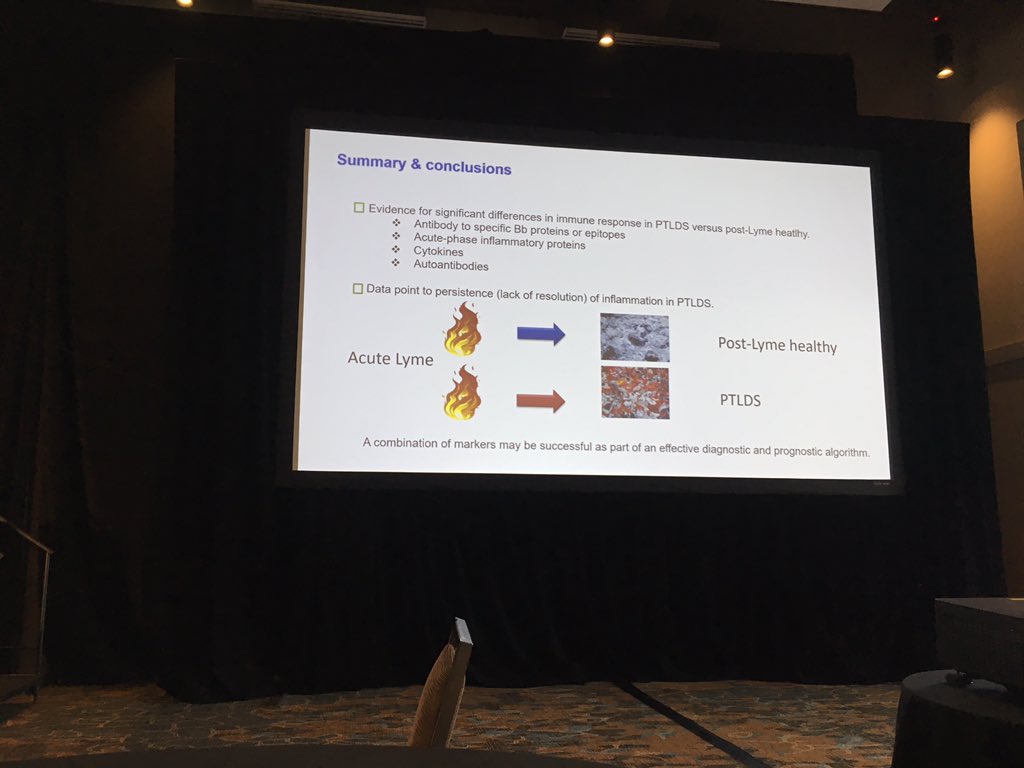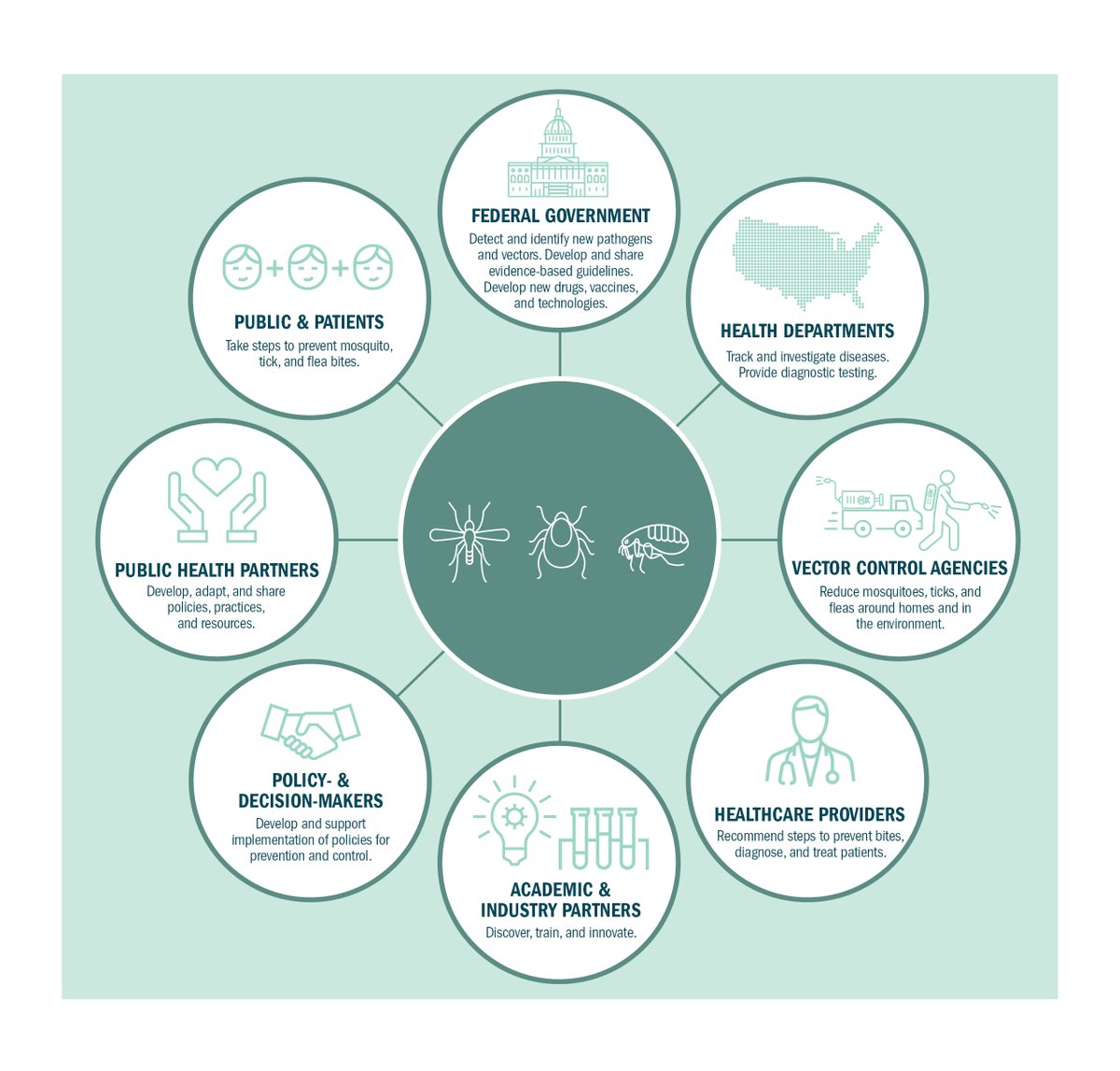Armin Alaedini, PhD @ColumbiaMed | Inflammatory mechanisms and biomarkers in the chronic manifestations of Lyme disease. #LivLymeSummit @liv_lyme 

@ColumbiaMed @liv_lyme Alaedini | primary focus is on mechanisms for PTLDS (patients who continue to have symptoms after antibiotics) not focused on antibiotic refractory Lyme arthritis. #LivLymeSummit
@ColumbiaMed @liv_lyme Alaedini | There are huge financial and physical implications for patients with persisting symptoms of Lyme. "This is a real condition!"
The burden of Lyme borreliosis expressed in disability-adjusted life years. #LivLymeSummit academic.oup.com/eurpub/article…
The burden of Lyme borreliosis expressed in disability-adjusted life years. #LivLymeSummit academic.oup.com/eurpub/article…
@ColumbiaMed @liv_lyme Alaedini | PTLDS: 3 main hyposheses
-persistent infection
-immune-mediated mechanisms triggered by original infection
-other causes (not related to Lyme)
#LivLymeSummit
-persistent infection
-immune-mediated mechanisms triggered by original infection
-other causes (not related to Lyme)
#LivLymeSummit
@ColumbiaMed @liv_lyme Alaedini | Several studies indicate persistence of non-cultivable Bb after antibiotic therapy in animal models.
JCI - Spirochete antigens persist near cartilage after murine Lyme borreliosis therapy. #LivLymeSummit jci.org/articles/view/…
JCI - Spirochete antigens persist near cartilage after murine Lyme borreliosis therapy. #LivLymeSummit jci.org/articles/view/…
@ColumbiaMed @liv_lyme Alaedini | Xenodiagnosis to Detect Borrelia burgdorferi Infection: A First-in-Human Study #LivLymeSummit ncbi.nlm.nih.gov/pmc/articles/P…
@ColumbiaMed @liv_lyme Alaedini | Immune response in PTLDS (biomarkers):
1) IgG/IgM immune reaction to B.b. (detected by standard two-tier test. Problem is these markers vary between individuals. Some never develop. Some never go away. So not a good marker of active infection. #LivLymeSummit
1) IgG/IgM immune reaction to B.b. (detected by standard two-tier test. Problem is these markers vary between individuals. Some never develop. Some never go away. So not a good marker of active infection. #LivLymeSummit
@ColumbiaMed @liv_lyme Alaedini | finding patients make a lot of antibodies to specific Bb proteins epitopes VlsE and C6. #LivLymeSummit
Epitope-Specific Evolution of Human B Cell Responses to Borrelia burgdorferi VlsE Protein from Early to Late Stages of Lyme Disease ncbi.nlm.nih.gov/pmc/articles/P…
Epitope-Specific Evolution of Human B Cell Responses to Borrelia burgdorferi VlsE Protein from Early to Late Stages of Lyme Disease ncbi.nlm.nih.gov/pmc/articles/P…
@ColumbiaMed @liv_lyme Alaedini | also seeing autoantibodies in these patients. #LivLymeSummit
Anti-neural antibody reactivity in patients with a history of Lyme borreliosis and persistent symptoms ncbi.nlm.nih.gov/pmc/articles/P…
Anti-neural antibody reactivity in patients with a history of Lyme borreliosis and persistent symptoms ncbi.nlm.nih.gov/pmc/articles/P…
@ColumbiaMed @liv_lyme Alaedini | cytokines: See increase in IFNa, IL-23, CCL-19 as an increased risk factor for these patients to develop chronic symptoms. #LivLymeSummit
@ColumbiaMed @liv_lyme Alaedini | see increased C-reactive protein (CRP) in early Lyme.
Expression of C-Reactive Protein and Serum Amyloid A in Early to Late Manifestations of Lyme Disease ncbi.nlm.nih.gov/pmc/articles/P…
Expression of C-Reactive Protein and Serum Amyloid A in Early to Late Manifestations of Lyme Disease ncbi.nlm.nih.gov/pmc/articles/P…
Alaedini | useful markers for patients w/ chronic symptoms of Lyme (PTLDS) #LivLymeSummit 





• • •
Missing some Tweet in this thread? You can try to
force a refresh







